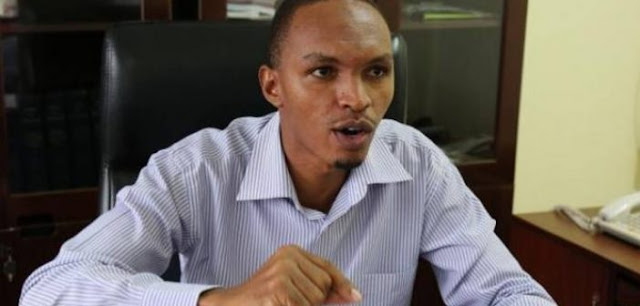Australian graphite developer
Kibaran Resources (ASX:KNL) has recently signed an agreement with Japanese
trading giant Sojitz for the supply of graphite from its Epanko project in
Tanzania. According to the exclusive agreement, Kibaran will supply a minimum
of 14,000t per year of natural flake graphite products from Tanzania to Sojitz
over the next 5 years.
Sojitz will distribute the graphite into Japan, Korea
and Taiwan to the lithium battery industry. “The Sojitz agreement provides an
avenue for long-term sales of Epanko graphite into the fast-growing lithium-ion
battery markets of Japan and Korea,” Kibaran’s press release indicates.
Kibaran
Managing Director Andrew Spinks said the company’s relationship with Sojitz
would also provide a platform to increase production capacity at Epanko as
market demand increases for battery grade graphite. He added: “Graphite demand
is forecast to treble on the back of the lithium battery demand and Kibaran’s
relationship with Sojitz and the ability to expand Epanko’s capacity means it
will be ideally positioned to capitalise on this opportunity.”
Tanzania
Graphite Production
Tanzania’s largest graphite deposits are located in the
central and east southern regions of the country.
At the end of 2015, The
Tanzanian Ministry of Energy and Minerals (MEM) announced that Tanzania will
soon become one of the largest producers of graphite in the world, due to
recent and abundant discoveries of graphite fields across the country.
In 2014,
China was the largest producer of graphite with 780,000t, followed by India
(170,000t), Brazil (80,000t), Canada, North Korea and Turkey with 30,000t,
Russia (14,000t), Mexico (8,000t), Ukraine and Zimbabwe with 6,000t, Madagascar
(5,000t), Sri Lanka (4,000t), Norway (2,000t) and other countries (1,000t).
Graphite discoveries in Tanzania come mainly from Magnis Resources Limited
(ASX:MNS), Mozambi Resources (ASX:MOZ) and Kibaran Resources Limited (ASX:KNL).
Kibaran’s primary focus is on the Epanko graphite project in south-east
Tanzania which will be capable of producing 44,000t a year of flake graphite
concentrate. Kibaran already has binding agreements for 30,000t of graphite per
year including 20,000t with German company ThyssenKrupp and 10,000t with
European graphite trader. “Kibaran is now studying the potential to increase
Epanko’s production capacity based on forecast growth in lithium battery
demand,” Spinks said.
Australian graphite
developer Kibaran Resources (ASX:KNL) has recently signed an agreement
with Japanese trading giant Sojitz for the supply of graphite from its
Epanko project in Tanzania.
According to the exclusive agreement, Kibaran will supply a minimum of
14,000t per year of natural flake graphite products from Tanzania to
Sojitz over the next 5 years.
Sojitz will distribute the graphite into Japan, Korea and Taiwan to the
lithium battery industry.
“The Sojitz agreement provides an avenue for long-term sales of Epanko
graphite into the fast-growing lithium-ion battery markets of Japan and
Korea,” Kibaran’s press release indicates.
Kibaran Managing Director Andrew Spinks said the company’s relationship
with Sojitz would also provide a platform to increase production
capacity at Epanko as market demand increases for battery grade
graphite.
He added: “Graphite demand is forecast to treble on the back of the
lithium battery demand and Kibaran’s relationship with Sojitz and the
ability to expand Epanko’s capacity means it will be ideally positioned
to capitalise on this opportunity.”
Tanzania Graphite Production
Tanzania’s largest graphite deposits are located in the central and east
southern regions of the country.
At the end of 2015, The Tanzanian Ministry of Energy and Minerals (MEM)
announced that Tanzania will soon become one of the largest producers of
graphite in the world, due to recent and abundant discoveries of
graphite fields across the country.
In 2014, China was the largest producer of graphite with 780,000t,
followed by India (170,000t), Brazil (80,000t), Canada, North Korea and
Turkey with 30,000t, Russia (14,000t), Mexico (8,000t), Ukraine and
Zimbabwe with 6,000t, Madagascar (5,000t), Sri Lanka (4,000t), Norway
(2,000t) and other countries (1,000t).
Graphite discoveries in Tanzania come mainly from Magnis Resources
Limited (ASX:MNS), Mozambi Resources (ASX:MOZ) and Kibaran Resources
Limited (ASX:KNL).
Kibaran’s primary focus is on the Epanko graphite project in south-east
Tanzania which will be capable of producing 44,000t a year of flake
graphite concentrate.
Kibaran already has binding agreements for 30,000t of graphite per year
including 20,000t with German company ThyssenKrupp and 10,000t with
European graphite trader.
“Kibaran is now studying the potential to increase Epanko’s production
capacity based on forecast growth in lithium battery demand,” Spinks
said.
Read more at:
http://www.tanzaniainvest.com/mining/epanko-graphite-supply-japan and
follow us on www.twitter.com/tanzaniainvest













































